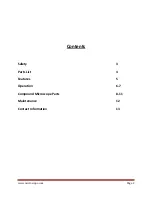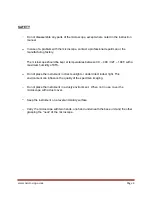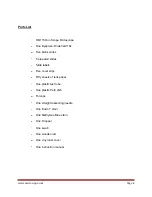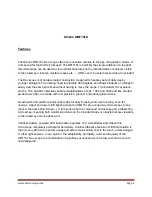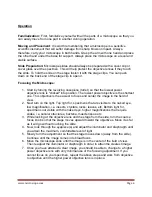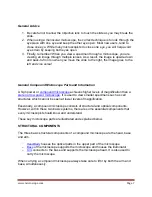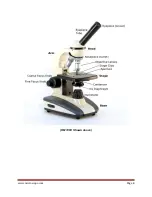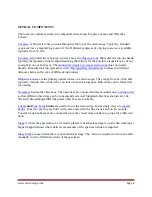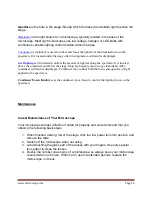
www.microscope.com
Page
7
General Advice
1. Be careful not to allow the objective lens to touch the slide as you may break the
slide.
2. When using a monocular microscope, the correct technique is to look through the
eyepiece with one eye and keep the other eye open. Most new users, tend to
close one eye. While many microscopists do close one eye, you will help avoid
eye strain by keeping both eyes open.
3. Finally, remember! When you view a specimen through a microscope, you are
viewing an image through multiple lenses. As a result, the image is upside down
and back-to-front so when you move the slide to the right, the image goes to the
left and vice versa!
General Compound Microscope Parts and Information
A high power or
compound microscope
achieves higher levels of magnification than a
stereo or low power microscope
. It is used to view smaller specimens such as cell
structures which cannot be seen at lower levels of magnification.
Essentially, a compound microscope consists of structural and optical components.
However, within these two basic systems, there are some essential components that
every microscopist should know and understand.
These key microscope parts are illustrated and explained below.
STRUCTURAL COMPONENTS
The three basic structural components of a compound microscope are the head, base
and arm.
Head/Body
houses the optical parts in the upper part of the microscope
Base
of the microscope supports the microscope and houses the illuminator
Arm
connects to the base and supports the microscope head. It is also used to
carry the microscope.
When carrying a compound microscope always take care to lift it by both the arm and
base, simultaneously.


